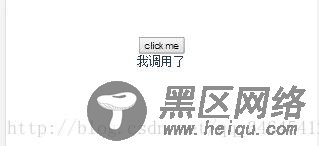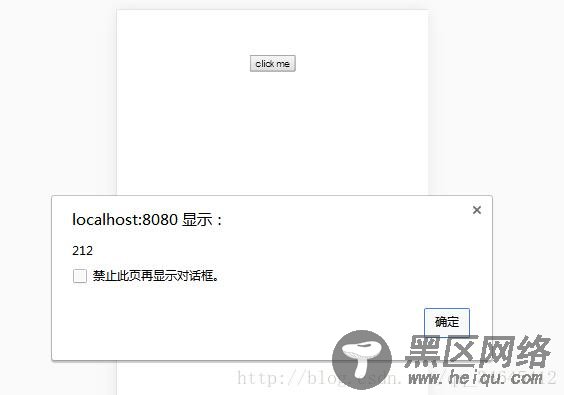仅仅传入自定义参数
HTML
<div> <button @click="tm(123)">ddddd</button> </div>
JS代码
new Vue({ el:'#app', methods:{ tm:function(e){ console.log(e); } } })
仅仅传入事件对象HTML
<div> <button @click="tm">ddddd</button> </div>
JS代码
new Vue({ el:'#app', methods:{ tm:function(e){ console.log(e); } } })
同时传入事件对象和自定义参数HTML
<div> <button @click="tm($event,123)">ddddd</button> </div>
JS代码
new Vue({ el:'#app', methods:{ tm:function(e,value){ console.log(e); console.log(value); } } })
补充:vue常用事件之v-on:click 以及事件对象,事件冒泡,事件默认行为
其实v-on后面跟的不止是click事件也可以是其他的事件,用法均相似。比如:v-on:click/mouseout/mouseover/mousedown.......
以下click为例
注意:所有的v-on都可以简写为@,比如说v-click可以简写为@click
1.监听事件可以用 v-on 指令监听 DOM 事件,并在触发时运行一些 JavaScript 代码。通常来讲就是监听dom触发一些操作,这些操作(比如点击)触发后执行的动作(js)可有直接写在后面
v-on:click="item+=1"
eg:
<template> <div > <input type="button" value="clickme" v-on:click="item+=1"/> <div>{{item}}</div> </div> </template> <script> export default { name: 'HelloWorld', data () { return { item:1 } } } </script> <!-- Add "scoped" attribute to limit CSS to this component only --> <style scoped> </style>
结果:

可以看见每点击一次绑定的值就增加1.也就是说可以吧js的操作放在事件触发的后面。但是有时候逻辑太复杂的时候写在里面就会造成混乱,视图和逻辑混淆。所以click后面可以接一个方法,把所有处理逻辑的方法封装在一个函数里面click的时候调用
2.事件处理方法v-on:click="greet"
eg:
<template> <div > <input type="button" value="clickme" v-on:click="greet"/> <div>{{res}}</div> </div> </template> <script> export default { name: 'HelloWorld', data () { return { name : 1, res:"" } }, methods:{ greet: function () { // `this` 在方法里指向当前 Vue 实例 this.res='Hello ' + this.name + '!'; } } } </script> <!-- Add "scoped" attribute to limit CSS to this component only --> <style scoped> </style>
效果:

可以看见点击之后执行了greet方法里面js逻辑
3.带参数的时间绑定方法:同上,唯一区别是携带了参数
v-on:click="greet(name)"
<template> <div > <input type="button" value="clickme" v-on:click="greet(name)"/> <div>{{res}}</div> </div> </template> <script> export default { name: 'HelloWorld', data () { return { name : 1, res:"" } }, methods:{ greet: function (reccept) { // `this` 在方法里指向当前 Vue 实例 this.res='Hello ' + reccept+1 + '!'; } } } </script> <!-- Add "scoped" attribute to limit CSS to this component only --> <style scoped> </style>
效果一致。对方法的调用同样可以一个方法多处多次的调用
4.内联处理器中的方法也就是说在方法里面调用其他的方法,这里的其他方法可以是js原生的方法比如阻止冒泡呀等等,也可以是自定义的方法
v-on:click="greet(name,$event)"
eg:
<template> <div > <input type="button" value="clickme" v-on:click="greet(name,$event)"/> <div>{{res}}</div> </div> </template> <script> export default { name: 'HelloWorld', data () { return { name : 1, res:"" } }, methods:{ greet: function (reccept,event) { if (reccept===1) this.say() }, say:function () { this.res="我调用了" } } } </script> <!-- Add "scoped" attribute to limit CSS to this component only --> <style scoped> </style>
效果:

$event 拿到当前点击事件的事件对象,比如click就是拿到当前点击的dom事件对象信息
v-on:click="greet($event)"
eg:
<template> <div > <input type="button" value="clickme" v-on:click="greet($event)"/> </div> </template> <script> export default { name: 'HelloWorld', data () { return { hide : true } }, methods:{ greet: function (ev) { alert(ev.clientX) } } } </script> <!-- Add "scoped" attribute to limit CSS to this component only --> <style scoped> </style>
效果:

当不阻止事件冒泡的时候会弹两次
eg
